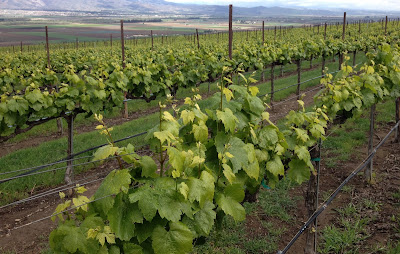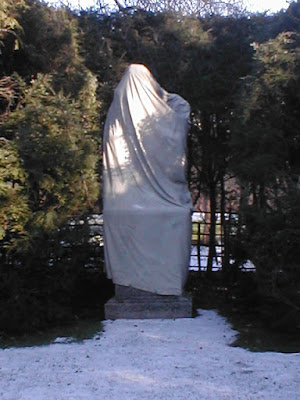Admittedly this is a strange note to end on, but it must be pointed out that this blog is alphabetical. And so, of course Zygophyllaceae comes at the end, although the common name "calptrop" would have placed it closer to the beginning.
There were various points where my life and the Zygophyllaceae intersected. When I worked in south Monterey county, I was told to mind the puncture vine, Tribulus terrestris. This was good advice, as the spiked seed pods are sharp and strong enough to cause a flat tire. One was encouraged to remove this low-lying weed whenever possible. Appropriately this plant is also called caltrop, after the brutal puncturing weapon.
Perhaps better known is the creosote bush, Larrea tridentata, one of the most widely distributed plants in the Mojave Desert. The name is due to the smell of the plant, which brings to mind creosote, a class of chemicals related to tar. A ring of creosote bushes in the Mojave Desert (the "King Clone") is considered to be one of the oldest living organisms at over 11,000 years old.
Also notable is the Guaiacum genus, which along with several members of the Bulnesia genus comprise what is known as "Lignum vitae", some of the hardest wood on earth, so dense it will sink in water. These natives of the American tropics have had numerous industrial applications in modern times, from ships to clocks. They also have had various medicinal uses over the years, from treating syphilis to sore throats. The widely used expectorant Guaifenesin is derived from the chemistry of Guaiacum trees. Guaiacum officinale is the national flower of Jamaica; Guaiacum sanctum is the national tree of the Bahamas.
Another species, Zygophyllum fabago, is also considered a noxious weed in the western US, although without the destructive potential of Tribulus terrestris.
There are approximately twenty other genera along with the five mentioned here, with a grand total of nearly 300 species for the whole Zygophyllaceae family. All in all this is a small but notable family, with species that seemed to have gone out of their way to distinguish themselves.
Also notable is the Guaiacum genus, which along with several members of the Bulnesia genus comprise what is known as "Lignum vitae", some of the hardest wood on earth, so dense it will sink in water. These natives of the American tropics have had numerous industrial applications in modern times, from ships to clocks. They also have had various medicinal uses over the years, from treating syphilis to sore throats. The widely used expectorant Guaifenesin is derived from the chemistry of Guaiacum trees. Guaiacum officinale is the national flower of Jamaica; Guaiacum sanctum is the national tree of the Bahamas.
Another species, Zygophyllum fabago, is also considered a noxious weed in the western US, although without the destructive potential of Tribulus terrestris.
There are approximately twenty other genera along with the five mentioned here, with a grand total of nearly 300 species for the whole Zygophyllaceae family. All in all this is a small but notable family, with species that seemed to have gone out of their way to distinguish themselves.








